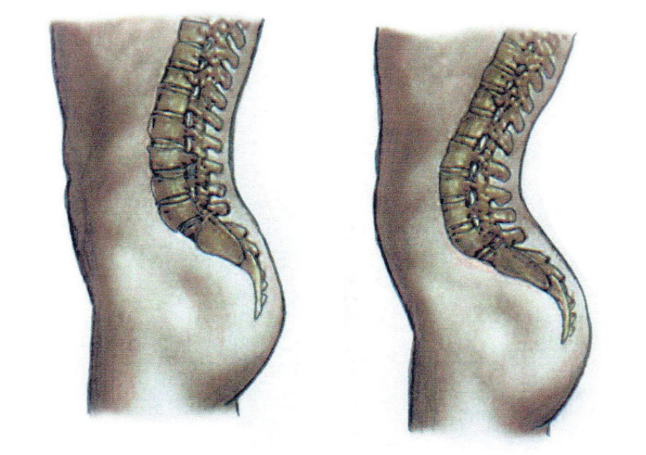What is Lordosis
Lordosis is a clinical syndrome characterized by a bulge at the front of the spine, which can be normal or pathological (Yamak et al., 2018). Each person’s physiological status is monitored. The lumbar and cervical spines are bent in this position, the pathological condition of the spine differs from the natural degree of curvature, and lesions of the thorax are less prevalent (Yamak et al., 2018). Muscle soreness is the most prevalent sign of spinal lordosis. Tension and muscular spasms are caused by curvature, while discomfort in the neck and shoulder area is one of the main signs of lordosis (Kim et al., 2018).
Structures damaged
The basis of the entire body is the spine. Any pathological alterations it undergoes have a negative impact on the functioning of particular organs as well as the entire body. Organs in the locations where the curvature is concentrated suffer the most (Yamak et al., 2018). The spine is also affected by issues. Inflammation of the vertebrae, deterioration of the vertebrae, prolapse, the formation of hernias, osteochondrosis, deforming arthrosis, and loss of performance are all possibilities (Yamak et al., 2018).
Three possible causes and how they affect structural orientation
Lordosis can afflict people of any age, but certain disorders and factors might increase the likelihood of acquiring it. Excessive weight has been linked to the development of lumbar hyperlordosis and the development of posterior axial tilt (Kim et al., 2018). The morphology of the lumbar lordosis, as well as the inclination of the long axis of the body, which produces the lordosis, were found to be substantially connected with fat deposits (Kim et al., 2018). Another important cause of lordosis is osteoporosis, a bone density disorder that can cause the vertebrae to lose strength, jeopardizing the spine’s structural stability (Yamak et al., 2018). This results in a shift in the curvature of the spine, resulting in lordosis. Finally, kyphosis, which causes the lower back compensates for an imbalance caused by a kink in the spine at a higher level.

References
Kim, C. Y., Lee, S. M., Lim, S. A., & Choi, Y. S. (2018). Impact of fat infiltration in cervical extensor muscles on cervical lordosis and neck pain: a cross-sectional study. Clinics in Orthopedic Surgery, 10(2), 197-203.
Yamak, B., İmamoğlu, O., İslamoğlu, İ., & Çebi, M. (2018). The effects of exercise on body posture. Electronic Turkish Studies, 13(18).